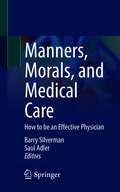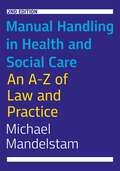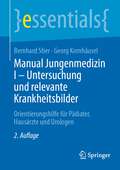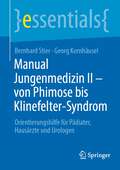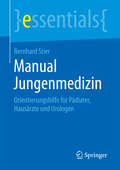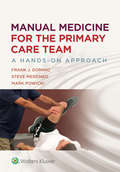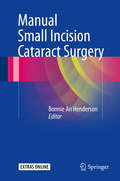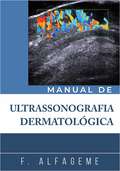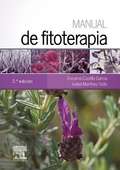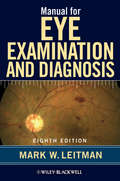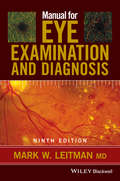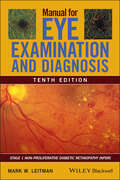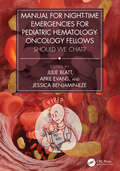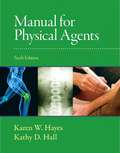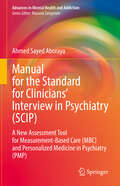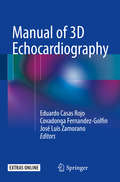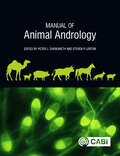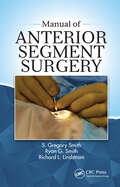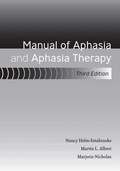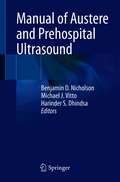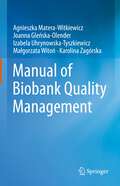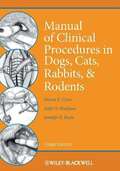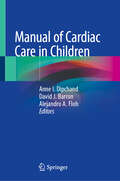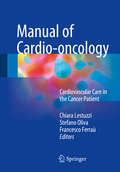- Table View
- List View
Manners, Morals, and Medical Care: How to be an Effective Physician
by Barry Silverman Saul AdlerThis book is a unique reference for medical students, residents, and allied healthcare workers who are just entering the medical field. It outlines in an anecdotal, yet pedagogical manner what one should expect and what is expected of an individual when embarking on a career at a clinic or hospital. Organized into two sections, the book defines in clear terms student responsibilities, expectations, and appropriate collegial interactions through the implementation of historical, moral, and ethical narrative techniques. Chapters discuss the justification of “medical professionalism” as defined in medical school core curriculum, and how and why such ideological norms exist. The book employs clinical scenarios based on incidents chosen to illustrate appropriate behavioral guidelines. The book also addresses common but difficult interpersonal problems all practitioners deal with that require empathy including delivering bad news, working with families, sexual harassment, the importance of diversity, and burnout in the work place. Each chapter includes short biographies meant to give context of the integral role of medicine in the development of our modern complex diverse society.Comprehensive, socially conscious, and written in an engaging yet didactic narrative style, Manners, Morals, and Medical Care serves as an authentic source and a practical guide on the responsibilities of a practitioner when caring for patients.
Manual Handling in Health and Social Care, Second Edition: An A-Z of Law and Practice
by Michael MandelstamManual Handling in Health and Social Care is written for all those involved in the manual handling of adults or children - including those carrying it out, assessors, managers and commissioners.It lays out the current legal requirements in a non-technical way and includes case studies illustrating the law applied in practice, across health, social care and sometimes educational settings. The book applies to England, Scotland, Wales and Northern Ireland. An extended introduction sets out challenges, past, present and future, including safety, balancing risk with duties to meet people's needs, human rights, avoidance of blanket policies, mental capacity, safeguarding, the limited resources of statutory services and single-handed care. It also considers some of the legal implications of increased use of technology (including remote assessment), as well as the "mechanisation" of care and its application to manual handling.The main part of the book is in the form of an A-Z guide, providing quick access to relevant legislation and common law (negligence) rules applying to personal injury cases. It covers also, extensively, judicial review legal challenges to decisions, when people and their families disagree with manual handing decisions that have been made. In addition, relevant ombudsman cases are included.The book will be essential reference for staff and managers in health and social care settings, students, legal professionals and all those working to ensure good practice and compliance with the law.
Manual Jungenmedizin I - Untersuchung und relevante Krankheitsbilder: Orientierungshilfe für Pädiater, Hausärzte und Urologen (essentials)
by Bernhard Stier Georg KornhäuselIn diesem essential bereiten die Autoren anhand ausgewählter Fallbeispiele die grundlegenden jungenmedizinische Fragestellungen auf, mit denen sich Ärzte in diesem Bereich im Alltag konfrontiert sehen. Ziel des Manuals ist, mit der übersichtlichen Beantwortung der wichtigsten Fragen zur Verbesserung der medizinischen Versorgung von Jungen bei Kinder- und Jugendärzten, Allgemeinmedizinern und Urologen beizutragen.
Manual Jungenmedizin II - von Phimose bis Klinefelter-Syndrom: Orientierungshilfe für Pädiater, Hausärzte und Urologen (essentials)
by Bernhard Stier Georg KornhäuselIn diesem essential behandeln die Autoren anhand ausgewählter Fallbeispiele weitere jungenmedizinische Fragestellungen, mit denen sich Ärztinnen und Ärzte in diesem Bereich im Alltag konfrontiert sehen. Dabei geht es um ebenso bedeutsame Erkrankungen und Syndrome, sodass dieses essential eine wichtige Ergänzung zum essential „Manual Jungenmedizin I - Untersuchung und relevante Krankheitsbilder“ (2. Auflage) von Bernhard Stier und Georg Kornhäusel darstellt.
Manual Jungenmedizin: Orientierungshilfe für Pädiater, Hausärzte und Urologen (essentials)
by Bernhard StierIn diesem essential bereitet Bernhard Stier anhand von ausgew#65533;hlten Fallbeispielen jungenmedizinische Fragestellungen auf, mit denen sich #65533;rzte in diesem Bereich im Alltag konfrontiert sehen. Ziel des Manuals ist, mit der #65533;bersichtlichen Beantwortung der wichtigsten Fragen zur Verbesserung der medizinischen Versorgung von Jungen bei Kinder- und Jugend#65533;rzten, Allgemeinmedizinern und Urologen beizutragen.
Manual Medicine for the Primary Care Team: A Clinician's Guide To Addressing Vaccine Hesitancy And Saving Lives
by Frank J. DominoOne of the most rewarding and helpful areas of primary care medicine is the opportunity to relieve the suffering of a patient in pain. Using a hands-on intervention can provide pain relief to the patient and professional satisfaction to the clinician.Manual Medicineoffers primary care physicians, nurse practitioners, and physician assistants the practical, hands-on guidance needed to accurately diagnose and provide initial management of commonly seen musculoskeletal problems. Dr. Frank Domino, along with physical therapists Steve Messineo and Mark Powicki, walk you step by step through the approach to a clinical problem (such as back pain or knee pain) and treatment. These easy-to-use maneuvers provide initial treatment that reduces suffering.
Manual Small Incision Cataract Surgery
by Bonnie An HendersonThis book, in a concise format, explains how to perform manual small incision cataract surgery. The procedure is broken down into the chief elements and described in a step by step manner. Besides the description of the procedure, the book covers indications, necessary supplies, preparation, complication management, and postoperative care. The authors are experts from around the world, and the book will be of value both for surgeons new to this technique and for experienced surgeons who need a review of the procedure. While phacoemulsification surgery has now become the standard of care, understanding how to perform manual extracapsular cataract extractions competently is crucial when faced with complications during phacoemulsification surgery, when operating in a region of the world without access to phacoemulsification or femtosecond lasers, or when a manual approach may be a better choice for the patient.
Manual de Ultrassonografia Dermatológica
by F. AlfagemeO primeiro manual prático de ultrassonografia da pele! Destinado a: dermatologistas, ultrassonografistas, radiologistas, cirurgiões plásticos, médicos estéticos ou médicos interessados em ultrassonografia dermatológica. Nível: Profissionais com e sem experiência em ultrassonografia da pele ou geral.
Manual de fitoterapia
by Encarna Castillo García Isabel Martínez SolísLa segunda edición del Manual de Fitoterapia constituye un compendio para la utilización de remedios naturales, principalmente plantas medicinales, de forma racional y basada en el conocimiento. Presenta la fitoterapia y su relación con las diferentes partes del cuerpo y sus dolencias, el protocolo de actuación, así como los nombres científicos y vulgares de cada una de las plantas.
Manual for Eye Examination and Diagnosis
by Mark LeitmanThe eighth edition of Manual for Eye Examination and Diagnosis provides a thorough overview of basic eye examination techniques, the use of instruments, and major ophthalmic disorders. The popular approach takes the reader through the eye exam, covering anatomy, differential diagnosis, and treatment. Now including over 500 full color photographs and illustrations, this classic guide also features up-to-date discussion of retinal and vitreoretinal disease. Students and trainees across the healthcare professions will welcome the short, digestible treatment of this fascinating specialty, and its practical emphasis.
Manual for Eye Examination and Diagnosis
by Mark W. LeitmanManual for Eye Examination and Diagnosis, 9th edition is a classic guide that provides a thorough update to basic eye examination techniques and the use of instruments and major ophthalmic disorders. Its popular approach takes the reader through the eye exam, covering anatomy, differential diagnosis, and treatment. Lavishly illustrated with over 550 color and black and white images, this accessible introductory text is designed for students who need a concise and thorough introduction to this complex and ever-changing specialty. Students and trainees across the healthcare professions will welcome the practical approach which focuses on the most commonly encountered eye diseases, their examination and treatment.
Manual for Eye Examination and Diagnosis
by Mark W. LeitmanNow in its tenth edition, Manual for Eye Examination and Diagnosis is the leading introductory clinical textbook in the field, providing concise and practical coverage of anatomy, instrumentation, differential diagnosis and treatment of ophthalmic diseases and disorders. This accessible resource offers clear explanations of current diagnostic techniques, equipment and best practice; hundreds of full-color clinical photographs and diagrams; and step-by-step guidance on a range of key procedures. Author Mark Leitman, a practicing Ophthalmology specialist with nearly five decades’ experience, provides the foundational knowledge required to excel on an ophthalmology rotation. This is a must-have companion for medical students and junior doctors, trainee ophthalmologists and optometrists, optometry nurses, and ophthalmic technicians.
Manual for Night-Time Emergencies for Pediatric Hematology-Oncology Fellows: Should We Chat?
by Julie Blatt Jessica Benjamin-Eze April M. EvansBeing on call as a pediatric resident or a pediatric hematology-oncology fellow can cause great anxiety. In addition to the relatively common patient with chemotherapy-related fever and neutropenia, there is the anticipation of problems that a trainee may have read about but not yet actually seen - the adolescent newly presenting with a white blood cell count of 600,000/mm3, the 2 year old spitting up blood with a platelet count of 2,000/ mm3 and a hemoglobin of 5g/dL, the child who comes to the ER with difficulty walking and is found to have a paraspinal mass on MRI. Most issues can wait until the next day when more senior practitioners are around, but some are true medical emergencies and just can’t.This manual is intended as a one-stop solution for such frantic moments - a quick resource to bridge the hours between the start of night call and morning rounds that focuses on what needs to be done immediately to avoid hurting a patient. It offers succinct guidelines and algorithms to address the emergencies most likely to come up overnight. For those tempted to turn to AI for quick solutions, there are some salutary lessons from responses AI has given when asked about such emergencies.
Manual for Physical Agents, Sixth Edition
by Karen W. Hayes Kathy D. HallThe book provides a concise guide to the application of the physical agents for students of physical therapy. It integrates concise summaries of the theoretical background and available evidence for each technique; step-by-step instructions presented generically, without brand names; and broad coverage of most current techniques.
Manual for the Standard for Clinicians’ Interview in Psychiatry: A New Assessment Tool for Measurement-Based Care (MBC) and Personalized Medicine in Psychiatry (PMP) (Advances in Mental Health and Addiction)
by Ahmed Sayed AborayaThe SCIP manual will introduce a new assessment tool designed to be compatible with 21st century advances in measurement-base care (MBC) and personalized medicine in psychiatry (PMP). The SCIP includes 18 clinician-administered and 15 self-administered reliable and validated scales covering most adult symptom domains: anxiety, obsessions, compulsions, posttraumatic stress, depression, mania, delusions, hallucinations, disorganized thoughts, aggression, negative symptoms, alcohol use, drug use, attention deficit/hyperactivity, and eating disorders. Mental health professionals (psychiatrists, psychiatry residents, psychologists, therapists, clinical social workers, counselors, nurses, nurse practitioners, physician assistants, professors, students, and mental health researchers) are the primary audience of the manual. These professionals will be able to implement SCIP scales in their practice and use the SCIP psychopathology glossary as part of the emerging science of personalized medicine psychiatry (PMP).Existing books on measures and rating scales, such as the two books above, describe different scales developed by different authors at different periods. Each scale has its own rating guidelines and training requirements, which must be followed by clinicians in order to use the scales. This demands a considerable amount of time for clinicians and can be a barrier to using the scales in practice. Even within the same psychopathology domain, many published measurement scales exist. For instance, the book published by Waters and Stephane includes 120 scales for psychosis. Among the 120 scales for psychosis, which scale(s) should the clinician choose? Our proposed manual will remove these barriers by creating simple and universal principles which allow readers to use the 33 reliable and validated SCIP scales with most adult psychiatric disorders. There will be 15 videotaped interviews available online for readers who buy the book. Readers are expected to watch the interviews in conjunction with reading the manual.
Manual of 3D Echocardiography
by Eduardo Casas Rojo Covadonga Fernandez-Golfin José Luis ZamoranoThis book is a practical guiding manual to explain critical clinical practice in three-dimensional (3D) echocardiography. The use of this technology has been limited to certain pioneer imaging units, but with the advent of lower cost hardware it is spreading and reaching more users that will start to use it often without previous experience or formal academic training. This title provides these readers with a full review of the features, clinical indications and methodological aspects of 3D echo in a practical, "how-to-do-it" way. 3D-echocardiography techniques are becoming more diverse, as they are applied to transthoracic and transesophageal studies, 3D-wall motion tracking, fusion of echocardiographic and fluoroscopy navigation, fusion of wall motion tracking and coronary tomography. All these aspects are described and explained deeply in this book.
Manual of Animal Andrology
by Cheryl Lopate Clifford F Clifford F Ahmed Tibary Roslyn Bathgate Robert V. Knox Paul R. Loomis Jane M. Morrell Kara R. StewartA succinct reference for those assessing and managing the reproductive functionality of male animals, this practical manual contains both generic and species-specific information suitable for widespread worldwide application. It covers all relevant aspects such as handling and restraint, physical examination, reproductive examination, important reproductive diseases, biosecurity, semen collection and its assessment, mating behaviour, and the fundamentals of semen handling and preservation for artificial breeding. A simple, concise 'go-to' for the useful techniques and procedures of animal andrology, this book: - Covers a wide range of species, including cattle, sheep, goats, pigs, horses, water buffalo, camelids and dogs - Provides normal values and ranges for important male reproductive traits, as well as guidelines for breeding soundness evaluations - Includes extra supplementary illustrations, protocols and resources through accompanying website to enable further learning. With information presented in a manner that will remain useful for years to come, Manual of Animal Andrology is an essential resource for veterinarians, theriogenologists, animal breeders, and students of veterinary and animal sciences.
Manual of Anterior Segment Surgery
by S Gregory Smith Ryan Smith Richard LindstromMicroscopic surgery requires complicated maneuvers. There are often photos, videos, and descriptions of what the instruments are doing. However, there are ways to set yourself up for success in ophthalmic surgical techniques. Inside the Manual of Anterior Segment Surgery is the wisdom of over 4 decades of surgical experience by Drs. Gregory Smith, Ryan Smith, and Richard Lindstrom covering the essentials of anterior segment surgery. Through this experience, one of the key ingredients in setting yourself up for success is the position of your hands with relation to the instrument and what you are trying to accomplish with the instrument. In a concise yet detailed manner, the basics of microscope management, patient head position, surgeon hand position, the relationship of the instrument and the hands, and how to enhance the performance of every surgical maneuver are covered with helpful illustrations. Designed to enhance your surgical techniques by putting you in a position to succeed, this manual will show you how to make the complex maneuvers look simple and improve patient outcomes. The Manual of Anterior Segment Surgery is a method to shorten your timeline to excellent surgery
Manual of Aphasia and Aphasia Therapy
by Martin Albert Nancy Helm-Estabrooks Marjorie NicholasManual of Aphasia and Aphasia Therapy 3rd Edition by Martin Albert, Nancy Helm-Estabrooks, and Marjorie Nicholas.
Manual of Austere and Prehospital Ultrasound
by Benjamin D. Nicholson Michael J. Vitto Harinder S. DhindsaUltrasound has rapidly become integral to the practice of emergency medicine. Over the past few years, with improvements in device size and cost, there has been increasing interest in exploring the utility of ultrasound in the prehospital environment. Much of the available literature on ultrasound in the emergency setting focuses on care delivered in emergency departments and intensive care units within the developed world. As a result, most resources are inappropriate and inadequate for doctors and non-physicians practicing in out-of-hospital environments that, by definition, are resource limited. This manual fills that gap by focusing on simplified discussions of ultrasound studies, ultrasound physics, and research that impacts out-of-hospital care in order to meet the needs of prehospital and austere providers.The manual discusses the use of ultrasound for diagnosis in out-of-hospital care, advanced noninvasive monitoring of patients, and safety in performing procedures common to the prehospital and austere environment. As is the approach for prehospital education, the chapters are complaint based and not diagnosis based where applicable. Chapters cover ultrasound image interpretation and basic physics; common image adjustments to improve image quality; unique challenges found in urban prehospital environments, austere/wilderness environments, tactical environments, and military special operations environments; and initial training, quality improvement/assurance programs, and credentialing. It also includes a section on procedures such as pericardiocentesis, vascular access, cricothyroidotomy, and others specific to austere providers. The Manual of Austere and Prehospital Ultrasound is an essential resource for physicians and related professionals, residents, and medical students in emergency medicine, civilian and military EMS providers, and critical care flight paramedics and nurses.
Manual of Biobank Quality Management
by Agnieszka Matera-Witkiewicz Joanna Gleńska-Olender Izabela Uhrynowska-Tyszkiewicz Małgorzata Witoń Karolina Zagórska Katarzyna Ferdyn Michał Laskowski Patrycja Sitek Błażej Marciniak Jakub Pawlikowski Dominik StrapagielThis pioneering handbook serves as an essential tool for any biobanking entity to create, implement and continuously improve their Quality Management System (QMS). Written in a concise and highly readable manner all biobanking related QMS aspects, ranging from legal aspects to safety matters, are addressed according to the best knowledge in compliance with the dedicated Biobanks ISO standards. Following a practical approach by making use of FAQ and common practice sections this book guides the readers through this complex field in an easy-to understand way.The guidelines are convergent not only with ISO 20387:2018 Biotechnology - Biobanking - General requirements for biobanking but also with ISO 9001:2015, ISO 19011:2018, ISO 27000:2014, and ISO 27002:2013. Furthermore, they are compatible, among others with the recommendations of the Organization for Economic Cooperation and Development (OECD), IARC, and ISBER Best Practices. Aimed at both biobank employees and other stakeholders (e.g. public bodies, political bodies, hospitals, pharmaceutical industry, funders) at any level of experience the book serves as valuable source for self-education and teaching. The manual complies to the principles of responsibility, openness, and transparency and can be used by any biobanking unit regardless of the biological material the biobank operates with and independent of their associated biobank network. On behalf of a group of specialists and experts in the area of biobanking, regarding Quality Management Systems (QMS), Ethical, Legal and Societal Issues (ELSI) and IT solutions, the authors present with this book a significant achievement based on activities within the project, European Research Infrastructure BBMRI-ERIC „Quality Standards for Polish Biobanks” Handbook (QSPB).
Manual of Botulinum Toxin Therapy
by Daniel Truong Mark Hallett Christopher Zachary Dirk Dressler Mayank Pathak Daniel Truong Mark Hallett Christopher Zachary Dirk DresslerFully updated throughout, the second edition of the Manual of Botulinum Toxin Therapy provides practical guidance on the use of Botox in a wide variety of disorders. New chapters have been added on the use of botulinum toxin in wound healing, in focal hand dystonia and in thoracic outlet syndrome, as well as others. There are new chapters on the use of botulinum toxins in conjunction with ultrasound guidance. Using clear line-drawings the Manual describes the relevant injection sites for each condition and gives comparative dosage tables for the various formulations of toxins used in different muscle groups. Throughout the emphasis is on technique and the book can be used as both a teaching aid and in bedside guidance. The manual will be of use to neurologists, otolaryngologists, urologists, ophthalmologists, dermatologists, internists, pain management specialists, rehabilitation specialists and plastic surgeons, and any other clinicians discovering the potential of botulinum toxin.
Manual of CLINICAL PROCEDURES IN DOGS, CATS, RABBITS, AND RODENTS
by Steven E. Crow Sally O. Walshaw Jennifer E. BoyleManual of Clinical Procedures in Dogs, Cats, Rabbits, and Rodents is the third edition of this esteemed veterinary medicine classic. The Third Edition offers readers expanded coverage of small exotic mammals such as gerbils, hamsters, and guinea pigs, alongside a thorough revision of the common procedures for dogs, cats, and rabbits. Organized in the same user-friendly format of earlier editions, the Manual is an essential purchase for small and exotic animal veterinarians and veterinary technicians.
Manual of Cardiac Care in Children
by David J. Barron Anne I. Dipchand Alejandro A. FlohThis practical reference provides effective clinical guidance for professionals working with patients with congenital and acquired cardiac disease. These patients are a complex group that require careful management, but when they present to the cardiology department they need swift attention. Consequently, this book provides the healthcare professional in the pediatric cardiovascular department with help when making critical clinical decisions in a high pressure environment. Containing numerous helpful illustrations, clinical algorithms and practical helpful text, Manual of Cardiac Care in Children is designed to educate the reader and provide guidance in a didactic patient-focussed approach. It is particularly relevant for frontline residents, fellows, nurses and allied health professionals to understand and assess key anatomy, physiology and treatments issues.
Manual of Cardio-oncology
by Chiara Lestuzzi Stefano Oliva Francesco FerraùThis concise and handy manual provides straightforward, up-to-date guidance for cardiologists and other practitioners on the management of cancer patients with cardiac problems, whether they be due to the cancer itself or to antineoplastic treatment. Detailed attention is devoted to the various forms of cardiotoxicity associated with chemotherapy and radiotherapy. The drugs commonly responsible for each toxicity are identified and clear advice is offered on monitoring techniques and treatment approaches. In addition, the issue of cardiotoxicity due to cancer treatment in particular patient groups - children, the elderly, and those with pre-existing cardiac disease - is addressed separately, with guidance on when and how antineoplastic (and/or cardiological) treatments should be modified. Further sections describe the correct responses to cardiac problems secondary to the cancer itself, including thromboembolic disorders and electrolyte imbalances, and the diagnosis, treatment, and follow-up of cardiac tumors. A closing section considers how to improve cooperation between oncologists, cardiologists, and general practitioners to ensure that cancer patients' cardiovascular needs are met in a multidisciplinary approach.
